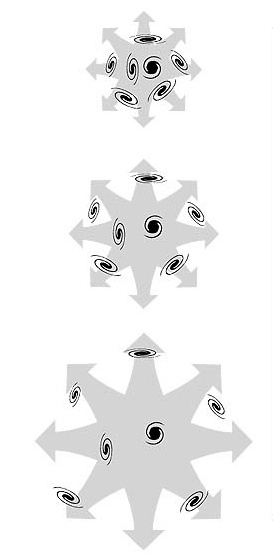An Open Universe
Click on image for full size
STScI
An Eternal Universe
If the universe does not contain enough matter to stop its expansion it will continue to expand forever.
Using the currently understood laws of physics we can project into the future what the Universe may look like in very distant eras. Two astrophysicists at the University of Michigan have outlined the future history of the Universe.
They have divided the future into Eras. The current Era is known as the Stelliferous or Star-Filled era. In this era the Universe is filled with stars and galaxies and planets as it is today. At the end of this era all stars have exhausted their fuel and have died leaving behind only remnants of their once glorious era.
The next era is known as the Degenerate era. In this era the universe is made of dead planets, brown dwarfs, white dwarfs, nuetron stars, black holes, and some theoretical forms of dark matter. At the end of this era all protons, which compose the nuclei of all atoms, disintigrate.
The next Era is the Black Hole era because black holes will be the only gravitaionally important objects left in the universe. However, Black holes do not last forever. They evaporate by a strange radiation process.
After that the Universe shall be composed of only radiation and particles which have an infinite lifetime such as electrons, positrons, and neutrinos. From this point on interesting things might continue to happen but we have reached the limits of our knowledge.
You might also be interested in:
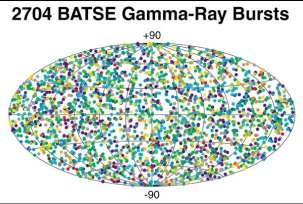
Satellites in the 1960's looked for a type of light called Gamma Rays. They found bursts of Gamma Rays coming from outer space! They can't hurt you. They are stopped by the Earth's atmosphere. We have
...more
When we look up at the night sky, we notice that there are many stars in our sky. Stars must like to live together in star cities - galaxies. Our city of stars is called the Milky Way, and it is home to
...more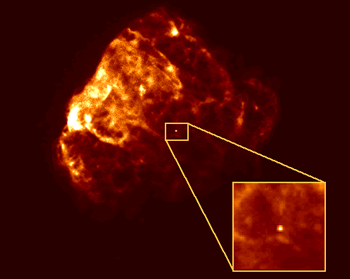
Neutron Stars form when really big stars die. When such a star runs out of fuel its center begins to collapse under gravity. When the center collapses the entire star collapses. The surface of the star
...more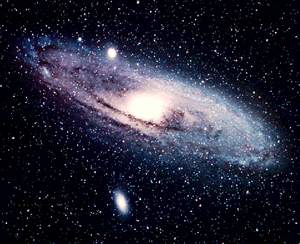
Spiral galaxies may remind you of a pinwheel that blows in the breeze. Like a pinwheel, a spiral galaxy is rotating, and it has spiral arms. Through a telescope or binoculars,a spiral galaxy may look
...more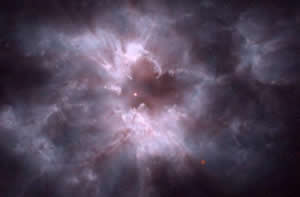
When stars like our own sun die they will become White Dwarfs. As a star like our sun is running out of fuel in its center it grows into a red giant. This will happen to our sun in 5 Billion years. The
...more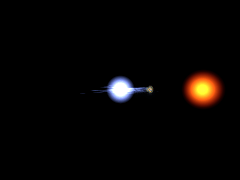
What's in a Name: Arabic for "head of the demon" Claim to Fame: Represents Medusa's eye in Perseus. A special variable star that "winks" every 3 days. Type of Star: Blue-white Main Sequence Star, and
...more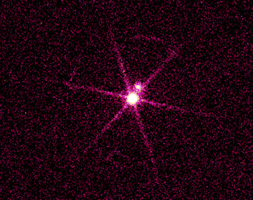
What's in a Name: Nicknamed the "Pup" because it is the companion to Sirius, "the Dog Star" Claim to Fame: Highly compressed white dwarf remnant. Density about 50,000 times that of water. It has approximately
...more


